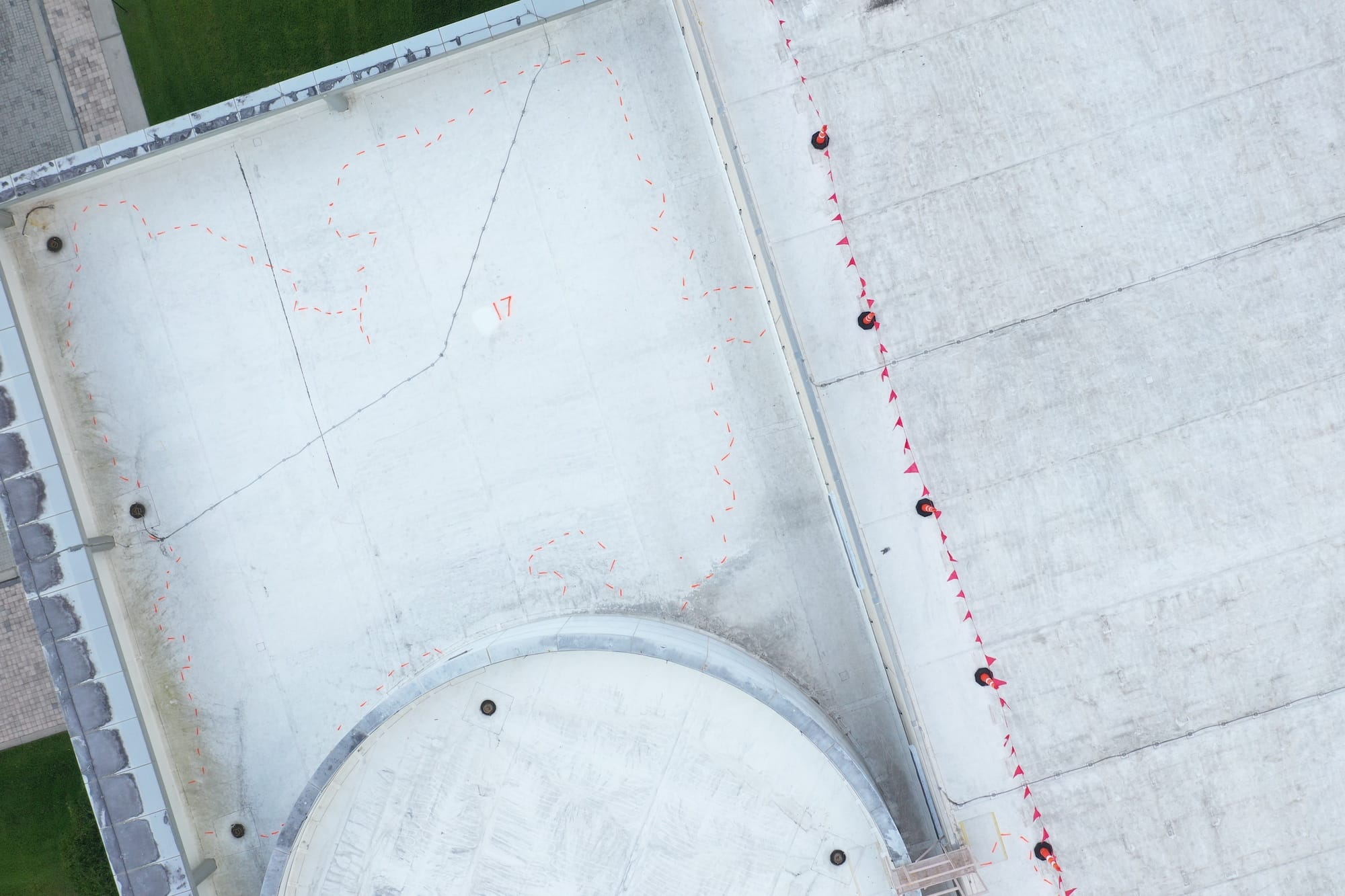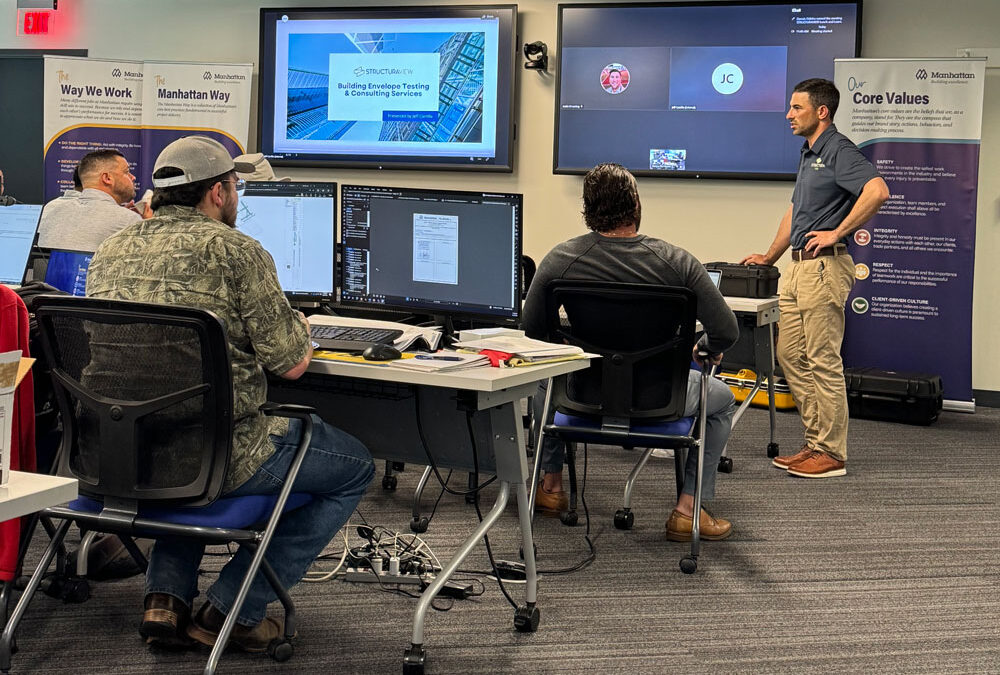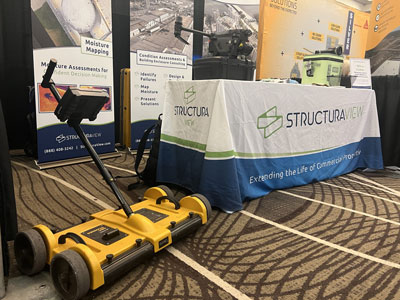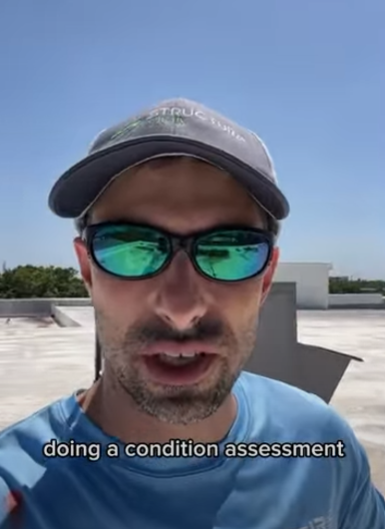Every commercial property owner or manager at some point in their career will hit the wall of trying to decide what they should do with their low sloped or flat roof. As the structures age, the subject becomes a constant juggling act of budget, keeping occupants happy and making judgement calls on how to stop leaks. A lot of this decision making process boils down to receiving the appropriate information and advice to base a decision from. To receive the most valuable information on what you should do with a problematic roof requires familiarity with the roof and experience to make recommendations that consider the condition of the roof, the budget and interest of the property owner/ occupant.
4 Step Investigation Process
We put each roof through a similar process that is being considered for repair or replacement. The first step in this process is to gather any known information or data on the construction, age, time frames leaks started occurring, research past weather events, study past reports or data on the roof, etc.
Once all the data is collected and understood, it is time to start the forensic study of the roof. The second step int the process is to perform a drone based RGB and thermal scan to identify where moisture is suspected to be present within the roof. This step is vital to the process because it helps point us straight to problematic areas in the roof. Moisture would not be present if it were not for an active or previously repaired opening. This gives us a base line to plan our physical inspection from and once the wet locations are validated, we can run calculations estimated how much wet roof structure is present.
Step 3 involves performing a physical investigation on the wet areas we identified in the thermal imaging. Hand held thermal imagers and moisture meters help us locate and confirm the wet spots. From there, we need to study why moisture was getting in the roof. Understanding if this was a material or workmanship failure compared to a weather created opening makes a big difference in determining whether the problems observed are systemic or isolated issues.
With all the field data collected, the fourth step is to process everything and assess the conditions to base recommendations from. With moisture confidently identified and calculated in correlation with an understanding of why the moisture got in the roof, we can then start crunching numbers in consideration of what is the route recommended to pursue.
Example
For this example, lets say this is a 14 year old 100,000 square foot TPO roof. The roof is aged and there were 30 different locations where moisture was observed in the roof with 4 active leaks in the building from a recent rain storm. The investigation validated an estimate of 32,500 square feet of moisture damaged roof material and observed a systemic failure in the welds in various locations. Based on this information, the recommendation would be to pursue a full replacement. The cost and head ache that would come with continuing to repair the roof would only bring frustration. Considering a roof over or coating is not going to be cost effective due to the manufacturer requirements to remove that wet structure prior to installation to get the warranty.
Recommendation
We deploy a process that helps provide the property owner with cold hard facts to base their decision off of when it comes to making these difficult decisions. Rather than coming to the property owner with a cost to install a roof over plus a cost per square foot to remove wet roof material as you find it (making this a variable quote), show the owner the options based on the known condition. After having put a roof through this process, you can present hard numbers to continue repairing the roof, install a second roof over the old one, have a coating put on or consider full replacement. This information goes the distance with helping to make sure the right decision is made and the customer is happy with the end result.



